-
U Warwick, U.K. National Grid expand £1.5 million partnership
Last week the University of Warwick and the U.K. National Grid have signed a Memorandum of Understanding (MoU) to extend the strategic alliance they have operated for last two years. To date that alliance has engaged in over £1.5 million worth of research and student scholarships in areas such as electricity transmission asset management, gas transmission, micro-tunneling, and cyber security.
-
-
Sea level rise dooms Miami, New Orleans
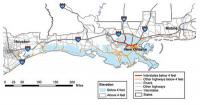
Say goodbye to Miami and New Orleans. No matter what we do to curb global warming, these and other beloved U.S. cities will sink below rising seas, according to a new study. “In our analysis, a lot of cities have futures that depend on our carbon choices but some appear to be already lost,” says one of the study’s authors. “And it is hard to imagine how we could defend Miami in the long run.” An online tool shows which U.S. cities may face “lock-in dates beyond which the cumulative effects of carbon emissions likely commit them to long-term sea-level rise that could submerge land under more than half of the city’s population,” said the study.
-
-
Instant water heater offers energy, cost savings
Traditional water heaters take time to reach preferred temperatures, thus wasting water and energy. A new instant hot water solution, developed through the EU-funded RAPIDHEAT project, successfully optimized heating and control technologies to develop a lightweight low thermal mass heater that provides full temperature output within two seconds of switch-on.
-
-
Cost-effective, non-polluting enhanced geothermal systems
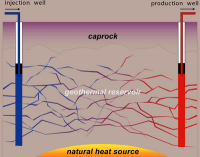
Tapping the natural heat of the earth may be more cost-effective and clean thanks to a research into a new area of geothermal energy, called enhanced geothermal systems. These systems are designed to enable power production in areas where conventional geothermal techniques do not work. Unlike typical geothermal systems, which rely on porous rock, enhanced geothermal systems have much greater potential to tap the energy of geothermal hot spots in areas of otherwise impermeable bedrock. The potential could be especially high in the western United States, including New Mexico.
-
-
NSF awards $74.5 million to 257 interdisciplinary cybersecurity research projects
The NSF the other day announced the awarding $74.5 million in research grants through the NSF Secure and Trustworthy Cyberspace (SaTC) program. In total, the SaTC investments include a portfolio of 257 new projects to researchers in thirty-seven states. The largest, multi-institutional awards include research better to understand and offer reliability to new forms of digital currency known as cryptocurrencies, which use encryption for security; invent new technology to broadly scan large swaths of the Internet and automate the detection and patching of vulnerabilities; and establish the “science of censorship resistance” by developing accurate models of the capabilities of censors.
-
-
Cyber vulnerability of civil nuclear facilities underestimated
The risk of a serious cyberattack on civil nuclear infrastructure is growing, as facilities become ever more reliant on digital systems and make increasing use of commercial off-the-shelf software, according to a new report. The report finds that the trend to digitization, when combined with a lack of executive-level awareness of the risks involved, means that nuclear plant personnel may not realize the full extent of their cyber vulnerability and are thus inadequately prepared to deal with potential attacks.
-
-
Understanding monsoons for better predictions of Indian weather
Summer, or southwest, monsoons are moisture-soaked seasonal winds that bring critical rainfall to the Indian subcontinent during the June-September wet season. An abundant season provides sustaining rainfall that replenishes water reservoirs and reaps bountiful crop harvests. By contrast, a weak season could lead to drought, soaring food prices and a battered economy. Better to understand global weather patterns and increase scientific collaboration between the United States and India, researchers have completed a month-long cruise studying summer monsoon conditions in the Bay of Bengal.
-
-
Water security test bed to focus on bolstering municipal water security
Water is the foundation for life. People use water every single day to meet their domestic, industrial, agricultural, medical, and recreational needs. After the September 2001 terrorist attacks, water system security became a higher priority in the United States. The Water Security Test Bed (WSTB) at Idaho national Laboratory can be used for research related to detecting and decontaminating chemical, biological, or radiological agents following an intentional or natural disaster. The WSTB will focus on improving America’s ability to safeguard the nation’s water systems, and respond to contamination incidents and to natural disasters.
-
-
Climate change will soon make atolls in the Pacific, Indian oceans uninhabitable
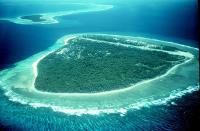
More than half a million people live on atolls throughout the Pacific and Indian Oceans. A new study shows that the combined effect of storm-induced wave-driven flooding and sea level rise on island atolls may be more severe and happen sooner than previous estimates of inundation predicted by passive “bathtub” modeling for low-lying atoll islands, and especially at higher sea levels forecasted for the future due to climate change.
-
-
Fusion energy is economically viable: Study
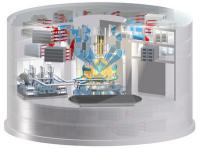
Fusion energy offers the tantalizing possibility of clean, sustainable, and almost limitless energy. But can it be an economically viable option? A team of researchers have calculated the cost of building, running, and decommissioning a fusion power station and how this compares to current fission nuclear power plants. They concluded that a fusion power plant could generate electricity at a similar price to a fission plant.
-
-
Animals have returned to Chernobyl
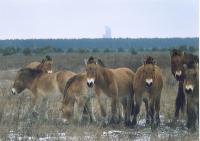
In 1986, after a fire and explosion at the Chernobyl Nuclear Power Plant released radioactive particles into the air, thousands of people left the area, never to return. Now, researchers have found that the Chernobyl site looks less like a disaster zone and more like a nature preserve, teeming with elk, roe deer, red deer, wild boar, and wolves. The findings are a reminder of the resilience of wildlife.
-
-
Eight dead, thousands stranded as South Carolina hit by “once in a millennium” floods
In what Governor Nikki Haley described as a “once-in-a-millennium” flood, a downpour has inundated large parts of South Carolina, causing at least eight deaths. By early Sunday, the storm had dumped more than eighteen inches of rain in parts of central South Carolina, and the state climatologist forecast another 2 to 6 inches through Monday as the rainfall began to weaken. After state police and emergency crews had to rescue hundreds of motorists and passengers from vehicles which stalled in high water, Haley announced all interstate highways in and around Columbia would be closed, and ordered to deployment of 600 national guardsmen to help with rescues and evacuations.
-
-
Price of solar energy in U.S. has fallen to 5¢/kWh on average
Solar energy pricing is at an all-time low, according to a new report. Driven by lower installed costs, improved project performance, and a race to build projects ahead of a reduction in a key federal incentive, utility-scale solar project developers have been negotiating power sales agreements with utilities at prices averaging just 5¢/kWh. These prices reflect receipt of the 30 percent federal investment tax credit, which is scheduled to decline to 10 percent after 2016, and would be higher if not for that incentive. By comparison, average wholesale electricity prices across the United States ranged from 3 to 6 cents/kWh in 2014, depending on the region.
-
-
U.S. has fallen behind on offshore wind power
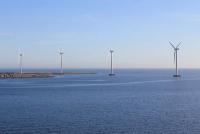
Experts say that the United States has fallen behind in offshore wind power. Their research shows that while offshore wind turbines have been successfully deployed in Europe since 1991, the United States is further from commercial-scale offshore wind deployment today than it was in 2005. “As we celebrate the 10-year anniversary of the U.S. Energy Policy Act of 2005, it is disheartening to see that while land-based wind and solar have reached new heights, U.S. offshore wind has remained a missed opportunity,” says one of the experts.
-
-
Storms after wildfire degrade water quality
About half of the water supply in the southwestern United States is supplied by water conveyed from forests, which generally yield higher quality water than any other land use. However, forests are vulnerable to wildfire; more than twelve million acres of land, including important forested water-supply watersheds, have burned in the southwestern United States in the past thirty years. Wildfires increase susceptibility of watersheds to both flooding and erosion, and thus can impair water supplies.
-
More headlines
The long view
Water Wars: A Historic Agreement Between Mexico and US Is Ramping Up Border Tension
As climate change drives rising temperatures and changes in rainfall, Mexico and the US are in the middle of a conflict over water, putting an additional strain on their relationship. Partly due to constant droughts, Mexico has struggled to maintain its water deliveries for much of the last 25 years, deliveries to which it is obligated by a 1944 water-sharing agreement between the two countries.
Trump Is Fast-Tracking New Coal Mines — Even When They Don’t Make Economic Sense
In Appalachian Tennessee, mines shut down and couldn’t pay their debts. Now a new one is opening under the guise of an “energy emergency.”
Smaller Nuclear Reactors Spark Renewed Interest in a Once-Shunned Energy Source
In the past two years, half the states have taken action to promote nuclear power, from creating nuclear task forces to integrating nuclear into long-term energy plans.
Keeping the Lights on with Nuclear Waste: Radiochemistry Transforms Nuclear Waste into Strategic Materials
How UNLV radiochemistry is pioneering the future of energy in the Southwest by salvaging strategic materials from nuclear dumps –and making it safe.
Model Predicts Long-Term Effects of Nuclear Waste on Underground Disposal Systems
The simulations matched results from an underground lab experiment in Switzerland, suggesting modeling could be used to validate the safety of nuclear disposal sites.
